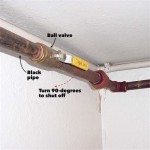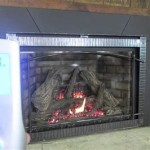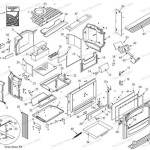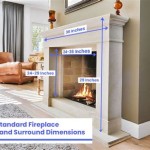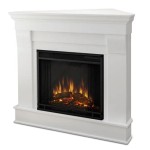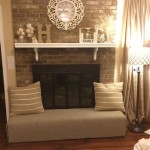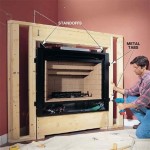Steel Fireplace Surround Cost: A Comprehensive Guide
A fireplace serves as a focal point in a home, adding warmth, ambiance, and aesthetic appeal. A crucial element of a fireplace's design is the surround, which frames the firebox and provides a finished look. Steel fireplace surrounds have gained popularity due to their durability, modern aesthetic, and versatility. Understanding the factors that influence the cost of a steel fireplace surround is essential for homeowners considering this upgrade.
The cost of a steel fireplace surround can vary significantly depending on several factors, including the type of steel, the size and complexity of the design, the finish, and installation costs. This article provides a detailed overview of these factors, allowing homeowners to make informed decisions about their fireplace renovation projects.
Factors Influencing Steel Fireplace Surround Cost
Several key factors contribute to the overall cost of a steel fireplace surround. These include the material used, the design intricacy, the finish applied, and the labor and installation fees. Each of these elements plays a significant role in determining the final price.
The type of steel selected is a primary cost driver. Different grades of steel possess varying properties and come with different price tags. Mild steel, stainless steel, and specialized alloys all offer distinct advantages and disadvantages, impacting both the aesthetic and the overall cost.
The design's complexity directly affects the manufacturing time and materials required. Simple, minimalist designs are generally less expensive than elaborate, custom-designed surrounds. Intricate patterns, detailed cutouts, and non-standard shapes necessitate specialized fabrication techniques, pushing up the final price.
The chosen finish significantly influences both the appearance and the cost of the steel fireplace surround. Powder coating, painting, and various metal treatments can enhance the durability and aesthetic appeal of the steel. Each finish type has associated material and labor costs that need to be considered.
Finally, installation costs must be factored into the overall budget. Professional installation ensures that the surround is properly fitted and secured, adhering to safety codes and manufacturer guidelines. Labor costs can vary depending on the location, the complexity of the installation, and the installer's experience.
Types of Steel and Their Cost Implications
The selection of steel type directly impacts the cost and performance of the fireplace surround. Different types of steel possess varying characteristics, including strength, corrosion resistance, and aesthetic appeal. Choosing the appropriate steel for the application is essential for achieving the desired outcome within budget constraints.
Mild steel, also known as carbon steel, is a common and relatively inexpensive option. It is suitable for many applications but is susceptible to rust and corrosion if not properly treated and maintained. Mild steel is often used for fireplace surrounds that are intended for indoor use, where the risk of exposure to moisture is minimal. The cost of mild steel is generally lower compared to other types of steel, making it an attractive option for budget-conscious homeowners.
Stainless steel offers superior corrosion resistance and a modern aesthetic. It is more expensive than mild steel but requires less maintenance and can withstand exposure to moisture and temperature fluctuations. Stainless steel is often preferred for fireplace surrounds in areas with high humidity or where a contemporary, minimalist look is desired. Different grades of stainless steel are available, each with varying levels of chromium and nickel content, which affect both the cost and the corrosion resistance.
Weathering steel, also known as Corten steel, is a high-strength, low-alloy steel that develops a unique, rust-like patina over time. This patina provides a protective layer that prevents further corrosion. Weathering steel is often used for outdoor fireplaces and architectural applications where a rustic, industrial aesthetic is desired. The cost of weathering steel is typically higher than mild steel but lower than some grades of stainless steel. Its unique appearance and durability make it a popular choice for certain applications.
Specialized alloys, such as heat-resistant steel, may be required for fireplace surrounds that are exposed to extreme temperatures. These alloys are designed to withstand high heat without warping or degrading. They are typically more expensive than other types of steel but are essential for ensuring the safety and longevity of the fireplace surround in high-heat environments. The specific alloy used will depend on the maximum temperature expected and the required level of durability.
Design Complexity and Fabrication Costs
The design complexity of a steel fireplace surround directly affects the fabrication costs. Ornate designs, intricate cutouts, and non-standard shapes require more time, materials, and specialized equipment, leading to higher overall costs. Simple, minimalist designs are generally more cost-effective to fabricate.
Custom designs often involve higher initial design fees. Architects or designers charge for their time to create unique plans and specifications. These fees can vary depending on the designer's experience and the complexity of the design. Homeowners should obtain multiple quotes from designers to compare prices and services.
The complexity of the design also impacts the fabrication process. Intricate patterns and detailed cutouts may require laser cutting, waterjet cutting, or other specialized techniques. These techniques are more expensive than traditional cutting methods such as sawing or shearing. The use of advanced fabrication techniques can significantly increase the cost of the steel fireplace surround.
The amount of welding required also influences the cost. Complex designs may require more welding to join different pieces of steel together. Welding is a labor-intensive process that requires skilled technicians. The more welding required, the higher the labor costs will be.
The size of the steel fireplace surround also plays a role in the overall cost. Larger surrounds require more material and more fabrication time. The weight of the surround can also impact installation costs, as heavier surrounds may require additional support and more manpower to install.
Finishes and Coatings: Cost and Aesthetic Considerations
The finish applied to a steel fireplace surround significantly impacts its appearance, durability, and cost. Various finishing options are available, each with its own set of advantages and disadvantages. The choice of finish should be based on aesthetic preferences, budget constraints, and the expected environmental conditions.
Powder coating is a popular finishing option that provides a durable, long-lasting finish. It involves applying a dry powder to the steel surface and then curing it with heat. Powder coating is available in a wide range of colors and textures and is resistant to scratches, chips, and corrosion. The cost of powder coating varies depending on the size and complexity of the surround, as well as the type of powder used.
Painting is another common finishing option. It is typically less expensive than powder coating but may not be as durable. Painting involves applying one or more coats of paint to the steel surface. The paint can be applied by brush, roller, or spray. The type of paint used will affect the durability and appearance of the finish. High-quality paints designed for metal surfaces are recommended.
Metal treatments, such as polishing, brushing, and patination, can enhance the natural beauty of steel. Polishing creates a smooth, reflective surface, while brushing creates a textured, matte finish. Patination involves applying chemicals to the steel surface to create a unique, aged look. Metal treatments can add to the cost of the steel fireplace surround but can also significantly enhance its aesthetic appeal.
Clear coating is often applied to protect steel surfaces from corrosion and discoloration. Clear coats are transparent and do not alter the appearance of the steel. They are typically used in conjunction with other finishes, such as polishing or brushing, to provide an additional layer of protection. The cost of clear coating is relatively low, but it can significantly extend the lifespan of the steel fireplace surround.
Installation Costs and Considerations
Installation costs are a significant component of the overall cost of a steel fireplace surround. Professional installation ensures that the surround is properly fitted, secured, and compliant with safety codes. The cost of installation can vary depending on the complexity of the project, the location, and the installer's experience.
The first step in the installation process is to prepare the fireplace opening. This may involve removing the existing surround, cleaning the area, and making any necessary repairs. The preparation work can add to the overall cost of the installation.
The complexity of the installation will also affect the cost. Simple installations, such as replacing an existing surround with a new one of the same size and shape, are generally less expensive than complex installations that involve modifying the fireplace opening or installing a custom-designed surround.
The location of the fireplace can also impact installation costs. Fireplaces located in hard-to-reach areas, such as attics or basements, may require additional labor and equipment to access. This can increase the overall cost of the installation.
The installer's experience and expertise will also influence the cost. Experienced installers are typically more expensive than less experienced installers, but they are also more likely to do the job correctly and efficiently. It is important to hire a qualified installer who is familiar with steel fireplace surrounds and has a proven track record of quality workmanship.
Permits may be required for the installation of a steel fireplace surround. Building codes vary by location, so it is important to check with the local building department to determine if a permit is required. Obtaining a permit can add to the overall cost of the installation.

25 Metal Clad Fireplaces For A Wow Effect Shelterness

Aluminum Or Stainless Steel Fireplace Surrounds Custom Frames For Fireplaces

Classic Steel Mantel

Steel Fireplace Surround Photos Ideas Houzz

A Blackened Steel Fireplace Surround With Concrete Hearth Is Strong Look Inside This Mid Century Modern House

What Is The Cost Of Hot Rolled Steel Fireplace Modern Design Metal Surrounds

Estimated Page Fireplaces Stoves Inserts Wood Gas Pellet

25 Metal Clad Fireplaces For A Wow Effect Shelterness

Bartello Agean Limestone Surround Cast Fireplaces

Gas Silver Steel Oak Surround Cream Marble Stone Large Fire Fireplace Suite 54

